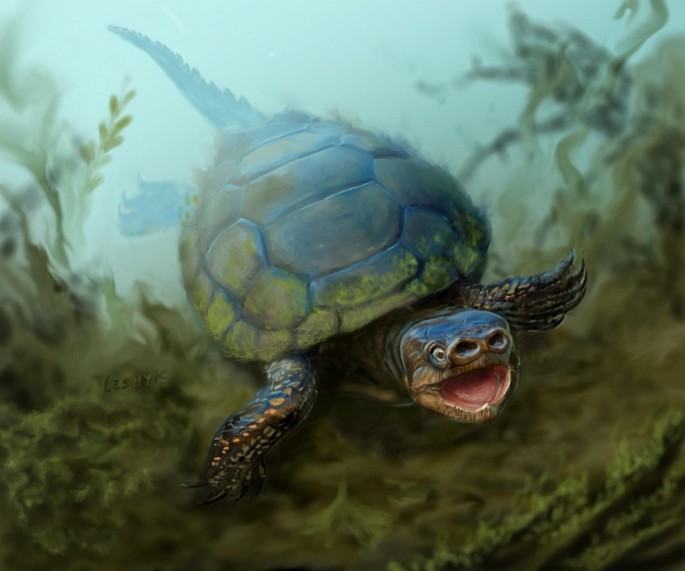Scientists uncovered a dinosaur fossil of an ancient turtle, that features a bizarre pig-like snout as this new research is crucial for gaining new insight about the evolution of turtles.
Researchers from the University of Texas discovered this odd ancient creature from the Grand Staircase-Escalante National Monument along with researchers from the Natural History Museum of Utah.
According to author of the study, Joshua Lively from the University of Texas, this fossil could belong to the most bizarre turtle that ever walked the earth.
This species is known by the scientific name of Arvinachelys goldeni which is classified under the baenids. The unique dinosaur was estimated to be around two feet long from its head to its tail where its shell is ideal for river environments.
Scientists believe that the turtle thrived some 76 million years ago, during the Cretaceous period, where Utah at the time was hot and wet. The region was also believed to be filled with rivers, lowland flooded areas and bayous.
Researchers describe the turtle to possess a broad nose with two bony openings that is unlike other turtles that normally have one nasal orifice on its outer skin, separated only by flesh.
The fossil is also one of the most well preserved ones to be uncovered from the time of dinosaurs, where the shell and skull are intact, including its integrated forelimb and partial hindlimb, along with bones from its neck area and tail as well. Most turtle fossils that are found are only composed of a detached skull or its shell.
At the time, these pig snouted turtles thrived in the western region of North America which was part of the large continent called Laramidia in prehistoric times. The island is also separated from the eastern region from the Arctic to the Gulf of Mexico.
Due to this geography, the pig snouted turtles along with dinosaurs of that era became varied since they were remote from each other. However, the reason why the creatures became isolated from the north and south regions of Laramidia remains unknown.
This new study is published in the Journal of Vertebrate Paleontology.



























